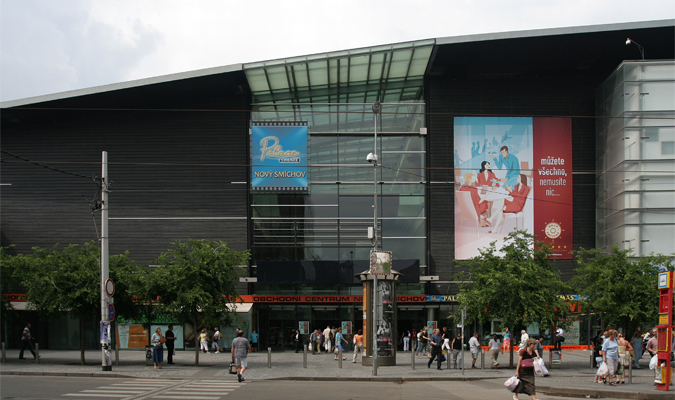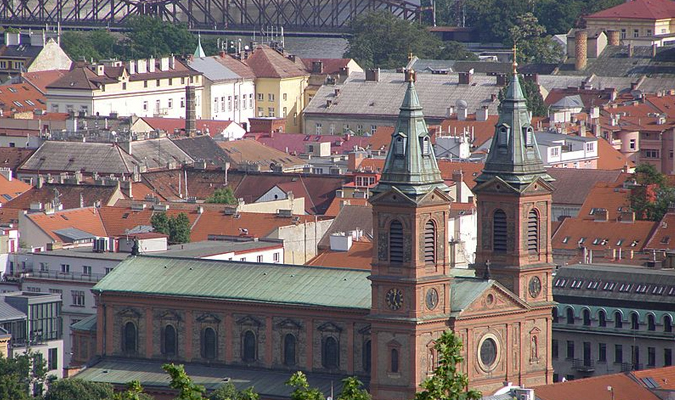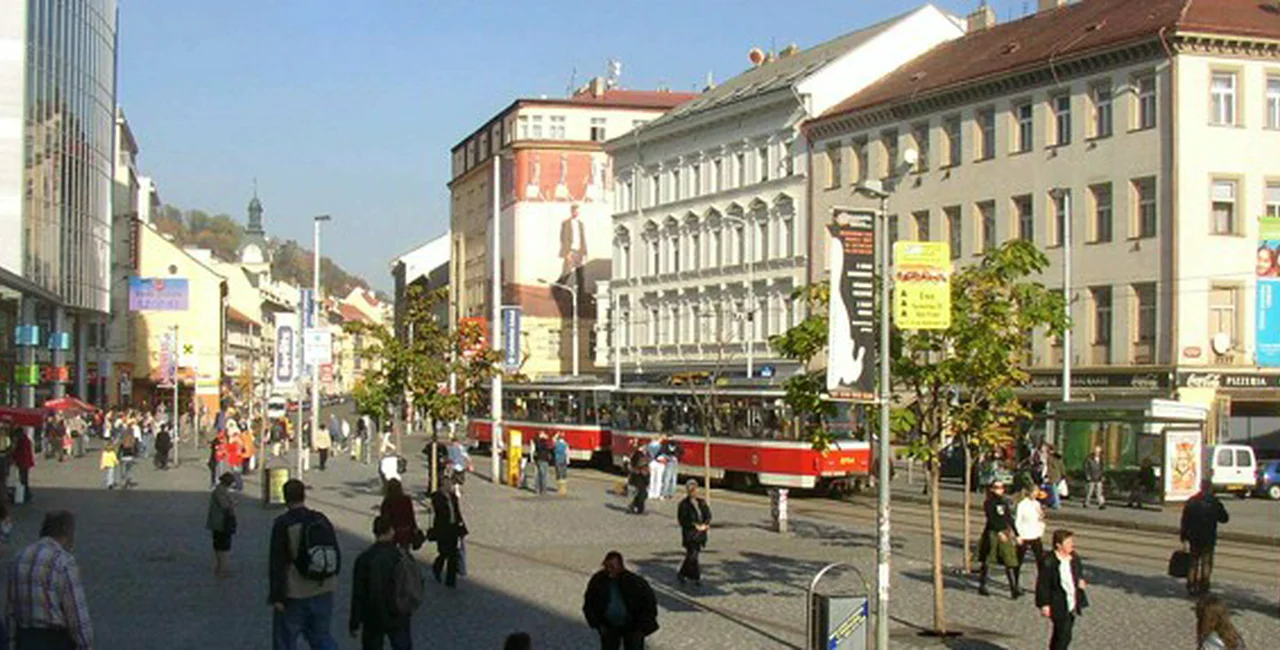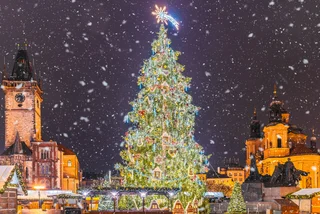Our series on Prague districts returns to another inner-city neighborhood that’s enjoyed a dramatic transformation over the last two decades: Smíchov. Like Karlín and Holešovice, Smíchov hasn’t enjoyed the best of reputations among Praguers as a place to live, but its housing stock has improved significantly over the years; old heavy industries have been replaced by service industries in shiny office blocks, and shopping and leisure are now as much associated with Smíchov as tram factories and brewing.
Location
Situated in the northeastern corner of Prague 5, Smíchov is very easy to find, immediately south of the Lesser Quarter. Smíchov extends westwards along Plzeňská, one of Prague’s key arterial routes, and down Nádražní and Strakonická, roughly as far as Zlíchov. The heart of Smíchov is Anděl, one of Prague‘s key transport interchanges and now a major commercial and entertainment center. Anděl is only minutes away from the city center, and is also connected to other side of the River Vltava by Palacký Bridge (Palackého most).
History
The story of Smíchov is similar to that of Prague’s other inner neighborhoods: a rural district that later changed beyond recognition during rapid urban development in the Industrial Revolution. The area is chronicled as far back as the Middle Ages, and in the following centuries Smíchov was essentially an agricultural area.
In the 19th century, Prague grew rapidly as new industries sprang up, aided by a burgeoning railroad network. The rail link with west Bohemia passed through the district, and heavy industries were established such as the Staropramen brewery and the Ringhoffer factory, which produced railway carriages, and later trams such as the vast ČKD Tatra concern.

Soon, a forest of chimneys and plumes of smoke became a familiar feature of the Smíchov skyline, in sharp contrast to the historic townscape of the Lesser Quarter a few blocks to the north. Smíchov continued to be an industrial center in the first half of the 20th century, and during Communism it retained its sooty, gritty character, which is brilliantly captured in the melancholy black and white images of photographer Jan Reich.
After 1989, Smíchov began to change and was earmarked by urban planners for redevelopment, partly to help relieve pressure on the historic center by creating business districts in old industrial quarters. Many new developments sprang up in the neighborhood, including the striking Zlatý Anděl building, designed by renowned French architect Jean Nouvel.
Soon after, the sprawling Nový Smíchov mall was built, incorporating one of the walls of the Ringhoffer tram plant. The only other reminder of the factory is the owner’s villa close by, an Art Nouveau monument marooned among flyovers and hip new hotels. The redevelopment of Smíchov has also included significant transportation projects such as the Strahov tunnel in the mid-90s, and the redevelopment of the Lihovar site on the southern edge of the neighborhood, which will change the area further.
Getting there and around
Smíchov is one of the most easily accessible districts of Prague, within walking distance of the Lesser Quarter and the right bank of the Vltava between the National Theatre and Palackého náměstí.
If you prefer to take the metro, Anděl and the subsequent station of Smíchovské nádraží, both on line B, serve the area. The busy junction at Anděl is one of Prague’s main transport hubs, with routes passing through it and heading off in all directions. At the moment, tram numbers 4, 6, 7 9, 10, 12 16 and 20 pass through Anděl, and several bus routes start at Na Knížecí bus station, at the southern exit of Anděl metro station.
Suburban bus routes (indicated by a “300” number) and national bus destinations south of Prague, such as Příbram, České Budějovice or Český Krumlov, also leave from Na Knížecí bus station. Trams and buses also converge at the Smíchovské nádraží train station, from where there are regular trains to the Main Station (Hlavní nádraží). Line S4 of the suburban train service, known as Esko, runs to Beroun via Smíchovské nádraží. For up to date information, see www.dpp.cz.

Environment
Smíchov used to be one of the dirtiest districts in Prague, compounded by its location under steep hills. Factory chimneys used to belch out smoke and noxious substances, but today Smíchov is much cleaner and greener. However, noise and fumes from traffic are a modern pollution issue, particularly along the main thoroughfares of Plzeňská, Nádražní and Strakonická. Other issues are the same as elsewhere, such as dog fouling, a perennial nuisance in Prague, and uncleared snow in winter.
Green space
Smíchov is perceived as being a densely built up area, although it does have access to a surprisingly large areas of open space, one of the most extensive of which is Kinského zahrada, the southern flank of Petřín Hill. The attractions of Petřín Hill itself are well-known, although strictly speaking it’s in the Lesser Quarter. Further south is the vast, exposed open space at Děvín, just above Prokopské údolí, a Prague beauty spot. On a more modest scale, Smíchov has a series of small squares that form mini parks, such as Arbesovo náměstí and Náměstí 14. Října. Less well-known, although easily accessible from the back of the Nový Smíchov mall, is the Sacre Coeur Park.

Photo: Wikimedia Commons | Daniel Baránek
Housing
Housing, like other aspects of life in Smíchov, has seen radical changes in the last two decades. Although in the past, much of the neighborhood has not had the best reputation as a place to live, regeneration, an excellent location and very convenient transport links are selling points that now attract people into the area, including a fair number of expats.
In the heart of Smíchov, in the 19th and early 20th-century blocks around Anděl, the housing stock consists exclusively of tenements, many of which have been restored in recent years. Properties around Janáčkovo nábřeží, along the riverbank, are of a very high standard, comparable to the apartments in the older part of Vinohrady. Understandably, they command high prices, which reflect their location as well building quality. Apartments in the area closer to Anděl are not quite as prestigious, but are still sought-after thanks to their location in what is now one of Prague’s most vibrant quarters.
As Smíchov merges with the adjacent district of Košíře, the housing stock changes, becoming a mixture of villas, villas divided into apartments, some tenements, and occasional blocks of flats. Renovated older properties here are much in demand, not least because of the combination of easy access to Anděl, relative seclusion, and excellent views.
SUMMARY
Strengths
• Excellent location close to the center
• Improved housing stock and villa quarter
• Excellent public transport links
• Attractive green spaces
Weaknesses
• Property becoming expensive
• Noise and traffic fumes is an issue on main roads
• Lack of off-street parking
***
OTHER PRAGUE DISTRICTS:












 Reading time: 6 minutes
Reading time: 6 minutes 

























